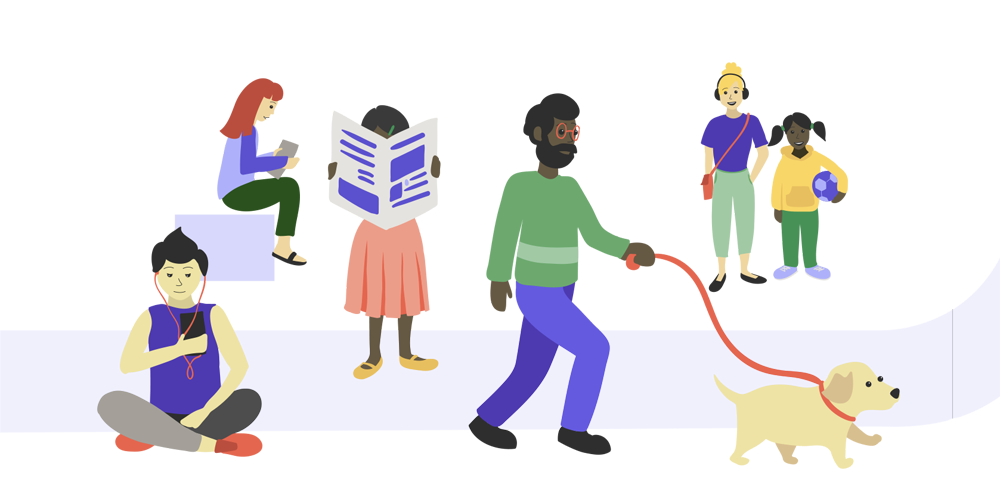Photo by Towfiqu barbhuiya on Unsplash
Summary by Chris Kilmer, University of Calgary
What do you need to know?
- Adults with autism experience anxiety disorders at a higher rater compared to non-autistic adults. In addition, there is limited research surrounding the use and efficacy of treatment for anxiety amongst autistic adults. Treatment interventions that are interoceptive (opposed to exteroceptive) in nature are found in this study to be more effective for autistic adults experiencing anxiety. Interoception means the way we feel our bodies working, such as our breathing or heart rate. Exteroception means the sensitivity you have to stimuli outside of your body, and includes our five senses.
What is this research about?
This research compares a new interoceptive form of treating anxiety in autistic adults, called Aligning Dimensions of Interoceptive Experience (ADIE), with an already established exteroceptive intervention. ADIE was developed when researchers found that autistic individuals had difficulty accurately reading interoceptive signals, such as their heart rate, which could lead to difficulty controlling emotions. ADIE involves educating participants on recognizing and then regulating internal body signals of anxiety. The ADIE intervention involved heartbeat detection after physical activity, and the other intervention involved matching emotions with faces and/or words.
What did the researchers do?
The researchers conducted the study with 121 autistic adults aged 18-65 years in the United Kingdom. Participants were randomly and blindly assigned to one of the two interventions, then completed a total of six intervention sessions over a 3-month period. The researchers used a variety of existing tools and measures to assess the onset of anxiety symptoms in participants. The participants were assessed initially at their ‘baseline’, 1-week, and 3-month mark.
What did the researchers find?
The ADIE intervention group found a greater reduction in trait anxiety, an increased awareness in bodily sensations, and increased performance accuracy. Those who were part of the ADIE intervention also had increased functional recovery compared to those in the other intervention. However, this difference was reportedly too small to be considered clinically significant.
How can you use this research?
This research is helpful in understanding the unique intersection between autism and anxiety. Additionally, ADIE as an intervention may be used by clinicians as an evidence-informed resource for autistic adults with anxiety. This study helps to fill a research gap in this area.
ABOUT THE RESEARCHERS
1. Lisa Quadt: Department of Neuroscience, Brighton and Sussex Medical School, Trafford Centre, University of Sussex Brighton, United Kingdom; Sussex Partnership NHS Foundation Trust Brighton, United Kingdom
2. Sarah N Garfinkel: Department of Neuroscience, Brighton and Sussex Medical School, Trafford Centre, University of Sussex Brighton, United Kingdom; Institute for Cognitive Neuroscience, University College London, London, United Kingdom
3. James S Mulcahy: Department of Neuroscience, Brighton and Sussex Medical School, Trafford Centre, University of Sussex Brighton, United Kingdom
4. Dennis EO Larsson: Department of Neuroscience, Brighton and Sussex Medical School, Trafford Centre, University of Sussex Brighton, United Kingdom; School of Psychology, University of Sussex, Brighton, United Kingdom; Leverhulme Trust, London, United Kingdom
5. Marta Silva: Cognition and Brain Plasticity Unit, Institute for Neurosciences, University of Barcelona, Barcelona, Spain
6. Anna-Marie Jones: Sussex Partnership NHS Foundation Trust Brighton, United Kingdom
7. Clara Strauss: Sussex Partnership NHS Foundation Trust Brighton, United Kingdom; School of Psychology, University of Sussex, Brighton, United Kingdom
8. Hugo D Critchley: Department of Neuroscience, Brighton and Sussex Medical School, Trafford Centre, University of Sussex Brighton, United Kingdom; Sussex Partnership NHS Foundation Trust Brighton, United Kingdom; Sackler Centre of Consciousness Studies, University of Sussex, Brighton, United Kingdom
CITATION
Quadt, L., Garfinkel, S. N., Mulcahy, J. S., Larsson, D. E. O., Silva, M., Jones, A.-M., Strauss, C., & Critchley, H. D. (2021). Interoceptive training to target anxiety in autistic adults (ADIE): A single-center, superiority randomized controlled trial. EClinicalMedicine, 39, 1–12. https://doi.org/10.1016/j.eclinm.2021.101042


